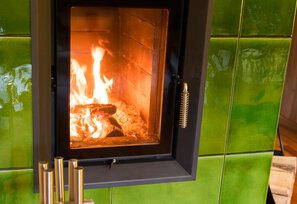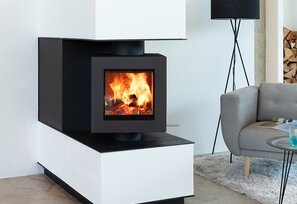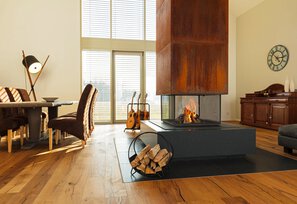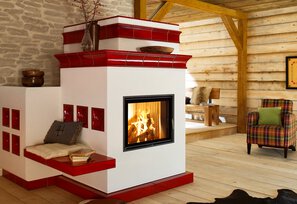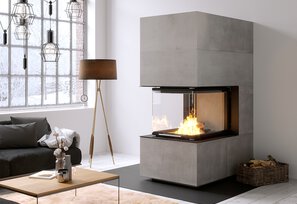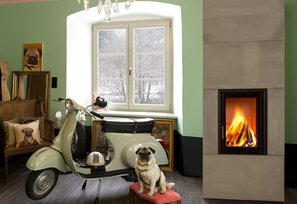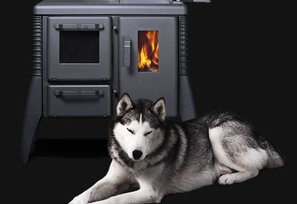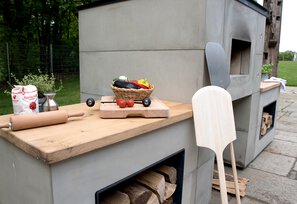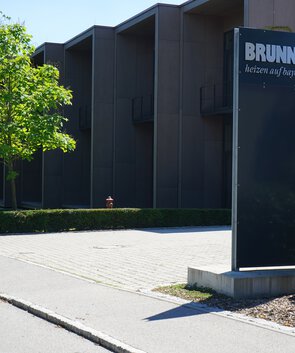Wood burning
Taking a closer look at the process
Flames dance, it crackles, cosy warmth spreads when wood burns. What we humans perceive as so pleasant is a chemical process. The oxygen from the air mixes with the carbon and hydrogen from the wood (wood is bound carbon as a solid matter) and energy is released in the form of heat and light. A combustion process always takes place in three phases: Drying, degassing, oxidation.
What happens in the drying phase?
Wood contains water. When the temperature in the fireplace insert rises to about 100 °C, this water starts to evaporate. The logs shrink and crack. Firewood should have a residual moisture content of less than 20 percent, i.e. it should be thoroughly dried. If it is wetter - you can tell by the clearly audible hissing when it evaporates - more heat, i.e. energy, must be used in the combustion process.
In our blog post you can find more information on correct heating.
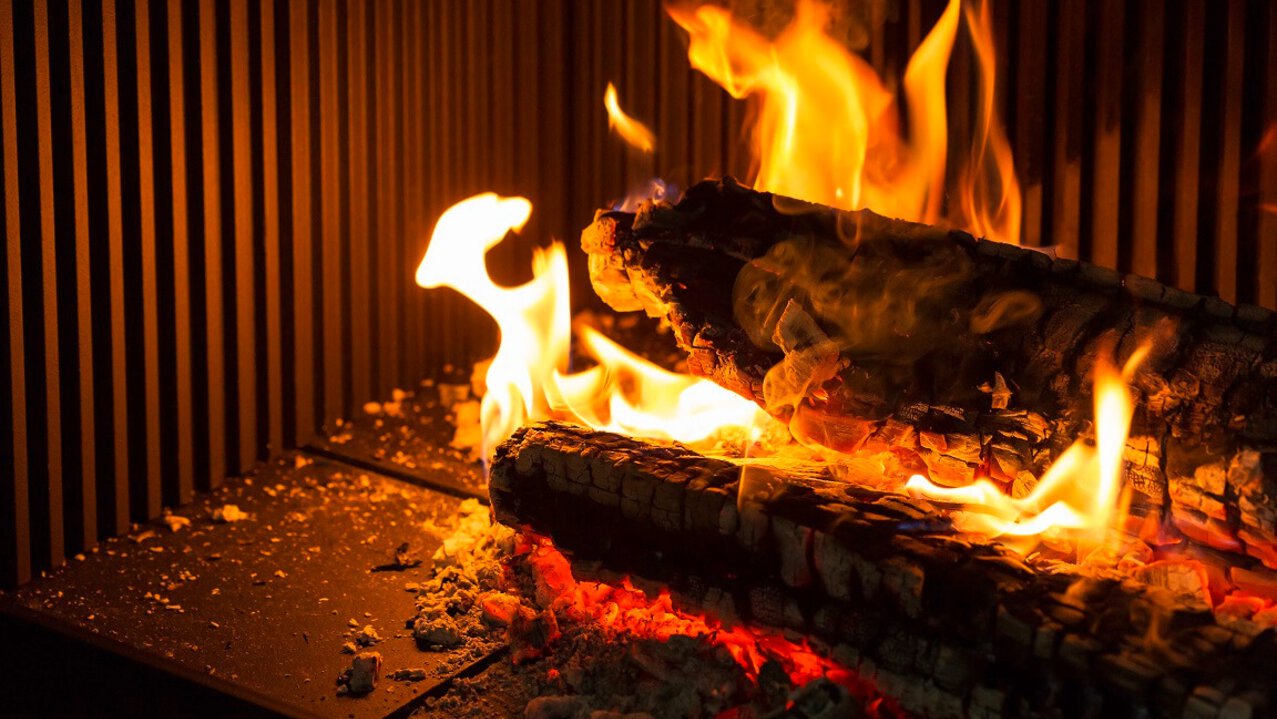
The burnout phase/oxidation is the actual combustion
When the volatile components of the wood have burnt off, the combustible gases are released in the next stage at 600 to 1300 °C, reaching the remaining approximately 30 percent thermal energy. The fire flames are now short and translucent. Once oxidation is complete, only ash remains. Good and clean combustion leaves fine, white ash. If larger amounts of unburnt fuel, coal or soot particles are visible, this is indicative of incomplete combustion.

Conclusion
To ensure that all phases of the combustion process (drying, degassing, oxidation) are as environment-friendly as possible and to achieve an optimal heating result with high efficiency, the wood should not be humid. Only well-dried fuel should be used (residual moisture of less than 20 percent). In addition, make sure that there is a sufficient air supply during combustion.
During the degassing phase, most of the firewood's calorific value is released, namely around 70 percent. The flames are particularly strong, yellow and blazing. All that remains of the original wood at this stage is the carbon skeleton.

